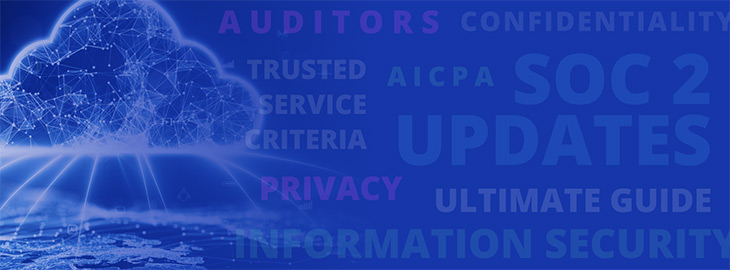
In the age of digital business, protecting your organization’s digital assets from cyber threats and reducing your cyber risk exposure has never been more critical – or more complicated. At the same time, most organizations must comply with numerous industry and government regulations that dictate data privacy and IT security standards.
To manage cybersecurity threats and meet regulatory compliance obligations, your organization will need a cyber risk management program that can fulfill both objectives.
Many organizations, however, don’t know where to begin.
Fortunately, several frameworks exist that can provide guidance. Indeed, many widely used frameworks today were first developed simply as a collection of best practices to help organizations navigate the often complicated risk management process. Those best practices were then organized and codified into frameworks that can help with security and compliance risks.
Some of the most common compliance frameworks include PCI DSS, which protects customers’ card payment details; COSO’s internal control framework, which safeguards financial information; and HIPAA, which protects patients’ healthcare data.
Even if your organization doesn’t need to meet compliance standards, you can still use these frameworks to compare the maturity of your risk management program against industry best practices and standards.
It’s also important to note that being in regulatory compliance does not always mean being secure. On its own, compliance is not enough to protect organizations from potentially devastating cybersecurity risks. Instead, you need a holistic, risk-based approach that makes room for all types of risk, compliance or otherwise.
This article will examine the cyber risk management process and how it can help define your risk posture. Then we’ll discuss how risk posture and compliance can come together to create a more holistic risk management program centered around security.
What Are The Different Types of Risks?
Risk is the possibility of losing, damaging, or destroying assets or information due to a cyber attack. A threat is an activity that increases the probability of a bad outcome, such as exploiting a vulnerability. The four major categories of risk are as follows:
- Strategic risk, such as a new competitor entering the market
- Compliance and regulatory risks, such as the implementation of new regulations or laws
- Financial risks, such as an increase in interest rates on your business loan or a client failing to pay its bills
- Operational risks, such as essential equipment failure or theft
These risk categories are not comprehensive, and specific threats to your business may fall into more than one.
What Are The Top Security Risks?
The Allianz Risk Barometer describes the top security risks to global business as follows:
- Cyber incidents
- Business disruption
- Changes in legislation and regulation
- Natural disasters
- Market fluctuations
- Climate change
- Reputation/brand worth deterioration
- AI and other emerging technologies
What Is The Difference Between a “Risk” and a “Threat”?
The terms “threat” and “risk” are used interchangeably to describe the landscape of possible dangers to the company, but they do represent different ideas. Risk is the possibility of losing, damaging, or destroying assets or information due to a cyber attack. A threat is an activity that increases the probability of a bad outcome, such as exploiting a vulnerability.
What Is Risk Posture?
Risk posture refers to the status of your overall cybersecurity program. It includes the comprehensive management and strategy for protecting your organization’s software and hardware, network services, and information from cyber risks.
Why Is Risk Posture Important?
Defining your organization’s risk posture helps executives to understand the threats to achieving your business objectives. That understanding can then sharpen your organization’s decisions about allocating resources to protect the organization from the risks with the highest probability and impact.
Risk Posture vs. Security Posture
Although often confused, risk posture and security posture are different.
An organization’s security posture refers to the overall status of its cybersecurity readiness. It encompasses information security, data security, network security, penetration testing, security awareness training, third-party vendor risk management, incident response plan, vulnerability management, data breach prevention, and other security tools and controls.
Your risk posture has more to do with the approach you take to manage the risks associated with those threats. Moreover, security posture and risk posture often have an inverse relationship with cybersecurity risk: as those postures improve, cyber risk will decrease.
Security posture and risk posture both flow from the risk assessment process. A risk assessment will help your organization fully understand its assets, their value, and the infrastructure to protect them.
Later in this article we’ll talk more extensively about risk assessments and how they can help your organization become more secure and prevent cybercriminals from disrupting your business. First we need to take a closer look at risk posture and some other risk-related factors that influence it.
What Factors Influence Risk Posture?
Risk Appetite
Risk appetite is the amount of risk your organization is willing to take to achieve its objectives. Ideally, your organization will seek to reduce risks and minimize their potential harm wherever possible, but all businesses will need to accept at least some risks to drive positive performance. Risk appetite is the amount of risk you’re willing to take to pursue business goals.
Your risk appetite will be unique to your organization, but some of it is guided by the regulatory requirements mentioned above. For the most successful risk appetite, your organization must adopt a single risk measurement and scoring methodology, plus a common risk language that can be applied consistently and understood throughout your entire organization.
Risk Tolerance
Risk tolerance is the range of performance you’re willing to accept in pursuing specific business goals. One could define risk tolerance as “acceptable variation from a performance goal.” (That is how COSO defines risk tolerance in its enterprise risk management framework.) So if risk tolerance measures how much loss you’re willing to accept for specific goals, you might ask: “How much risk of a breach via a third party are we willing to accept? Should we spend more money controlling our third parties tightly or save money and trust that their security self-assessments are valid?
Your organization’s risk appetite and tolerance define your risk posture or overarching risk management approach. A strong risk posture will help your organization take more significant risks within the constraints of your strategic and operating objectives.
Compliance
The average data breach cost reached new heights at $4.24 million in 2021, and when the breach included a compliance failure as well, the costs were even higher. Organizations that suffered high-level compliance failures that resulted in fines, penalties, and lawsuits experienced an average cost of $5.6 million per breach.
As we mentioned above, compliance alone is not enough to inform the entirety of your risk management program, and therefore your risk posture. Still, you must consider it essential when planning your organization’s overall cybersecurity.
How Does Compliance Influence Risk Posture?
If your organization complies with all necessary frameworks, it is inevitably more secure than it might otherwise be – but that comfort will only go so far. Compliance risk is still only one security risk among many, and all the others can also threaten your risk posture.
The trap here is that while compliance should be the top concern for IT security and risk management, too many organizations leave it as the only concern. Instead, they take a compliance-driven, check-the-box mentality to cybersecurity: “We’re in compliance with all rules, so we needn’t do anything more.”
That’s wrong. A compliance-driven approach can help achieve point-in-time compliance certifications, but it can often impede a more continuous approach to measuring risk posture in real time.
A more holistic approach to risk management will be informed by the compliance requirements set forth by governing bodies, but is not limited to those requirements. Ultimately, to gain insight into the strength of your organization’s risk posture, you’ll need to go beyond assessing compliance and take threats, vulnerabilities, and risks into account throughout the risk management process.
How Can a Company Mitigate Security Risks?
Given the ever-changing threat landscape, here are some measures you should include in any security risk mitigation strategy to maintain your business safe:
-
Conduct a Risk Assessment for Cybersecurity
Conduct a cybersecurity risk assessment to identify the dangers your company faces, the likelihood of their occurrence, and the harm they can inflict. The risk assessment findings will indicate your organization’s readiness to respond to security events. In addition, they will reveal weaknesses in your infrastructure to common threats such as phishing, malware, brute-force attacks, and ransomware.
-
Create an Incident Response Plan
An incident response plan is a written collection of tools and instructions designed to assist your team in promptly identifying, dealing with, and recovering from cybersecurity attacks. If a security breach happens, a good incident response plan assures that you have the appropriate people, procedures, and technology to handle the problem and minimize damage. An incident response plan is notably beneficial for preventing data breaches, ransomware, denial-of-service attacks, malware, and other assaults aimed at disrupting the operation of a system.
-
Train Your Team
Regular training is the most effective technique for lowering your team’s chance of becoming a security risk. This training should involve all team members (not just your cybersecurity or IT employees) because any of them could become a vulnerability in your processes. Furthermore, when employees are adequately trained, you may avoid security vulnerabilities caused by social engineering attacks such as phishing.
-
Monitor and Protect Your Network Traffic
Poor network security can cause various nightmare scenarios. Hence, mitigating security risks in your network should include monitoring network traffic for intrusion attempts. Because rogue employees within your network may leak sensitive information, this monitoring applies to inbound and outbound traffic. With adequately set firewalls and threat intelligence systems, you can detect and block malware, denial-of-service attacks, botnets, and man-in-the-middle attacks before they cause any harm.
-
Encrypt and Backup Your Data
Backups are critical for assuring business continuity in the event of a disaster. Encryption adds another layer of security to your backups, limiting unauthorized access to your essential data. Using these cybersecurity risk mitigation strategies, you may avoid data loss due to ransomware attacks, data breaches, or human error.
-
Monitor Your Vendors
Your company most likely outsources some of its activities to third-party contractors. As a result, these companies’ security postures may affect your company’s cybersecurity readiness, mainly if their services are critical to your operations. Third-party vulnerabilities are routinely used by hackers that target popular software systems.
-
Be Compliant with Industry Regulations
Regulatory authorities across a wide range of sectors realize cybersecurity’s essential function in allowing businesses to thrive in today’s climate. As a result, its stakeholders must closely follow information security rules. The Payment Card Industry Data Security Standard (PCI DSS) is an excellent example since it includes cybersecurity risk mitigation measures to prevent credit card fraud and unauthorized access to sensitive data.
How to Strengthen Risk Posture
Without a strong risk posture, you inevitably expose your organization to several risks that might be otherwise avoidable. In addition, the modern attack surface is massive, which makes the task of bringing it into focus all the more critical. For the most robust risk posture, we recommend the following best practices:
-
Examine Existing Frameworks
While the entirety of your risk management program should not be informed by compliance alone, it’s still an essential factor to consider. Whether compliance is a requirement or not, most organizations begin their journey toward better risk management by examining some of the existing compliance frameworks to inform their policies and procedures.
Whether PCI DSS, HIPAA, NIST, COSO, ISO, or any other compliance framework, simply using an existing standard as the basis for your risk management program can go a long way toward more robust and well-defined processes.
You’ll need to conduct an audit to determine whether your organization meets those requirements. An internal audit can help you prepare for an external audit by a governing body so that you’re not surprised by the results – but an audit can also help you determine whether your risk management program is working correctly.
-
Practice Thorough Risk Management
You can create all the policies and procedures you want using any number of compliance frameworks as a starting point. Until you put these practices into place, however, they probably won’t do much good.
Start by creating a list of all your assets to set yourself up for success. While it might sound self-explanatory, organizations often struggle to define what they’re trying to protect. Typically this list will include your systems, applications, devices, data, business processes, and users.
Next, you’ll need to conduct a risk assessment to identify and prioritize the risks to those assets. A thorough risk assessment also involves a certain degree of vulnerability management. This means monitoring your assets for vulnerabilities, including the likelihood of an attack and the harm it might cause.
Once you’ve completed a risk assessment, you’ll need to document the results. This includes taking note of existing security controls (such as firewalls) that reduce risk to your assets and mitigation strategies for any risks without controls. A thorough risk assessment will help you determine your risk appetite and tolerance and ultimately inform your risk and security posture.
After you’ve collected all this information, you need to turn it into actionable content for the decision-makers, ultimately deciding what to do about risks. This is where the management portion of risk management is most important; all the information you derive from the risk assessment process is meaningless unless you can apply it to your organization in a tangible way.
-
Regularly Audit and Continuously Monitor
As mentioned above, auditing your organization to make sure that it’s meeting compliance requirements can go a long way toward a more holistic approach to risk management. But a single audit at a certain point in time isn’t enough to determine whether your organization is secure or not.
Ultimately, your organization will need to continuously monitor its compliance and risk posture and attack surface to protect itself from the ever-evolving threat landscape. This means finding ways to stay informed about any threats, vulnerabilities, and risks your organization faces daily.
If this sounds overwhelming, you’re not alone. Fortunately, there are automation solutions that can help.
Manage Compliance and Improve Risk Posture with ZenGRC
If your organization struggles with risk management, the right tools and compliance software can make all the difference.
The ZenGRC, which underpins Reciprocity ZenRisk and Reciprocity ZenComply, gives you the power to be more strategic with IT risk management by putting your business activities front and center. Discover a modern way to manage your risk posture with ZenGRC, allowing you to understand and act on your IT and cyber risks, all in a unified platform.
With an incredibly intuitive user experience paired with in-application expert guidance, you can assess, manage, and communicate risks and their potential business impact. Using AI, the relationships between assets, controls, and risks are automatically created, alerting you to changes in your risk posture and making it simple to grow and manage your risk programs.
With dashboards and reports that provide contextual insights, it’s easier to communicate with key stakeholders and make informed business decisions with ZenGRC.
Become more strategic with your IT risk management and talk to an expert today to learn more about how the Reciprocity Product Suite can help your organization confidently manage risks and compliance.




